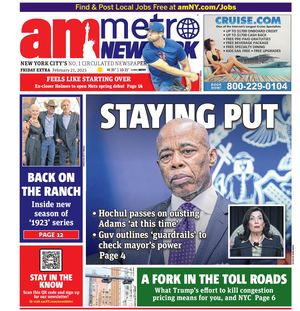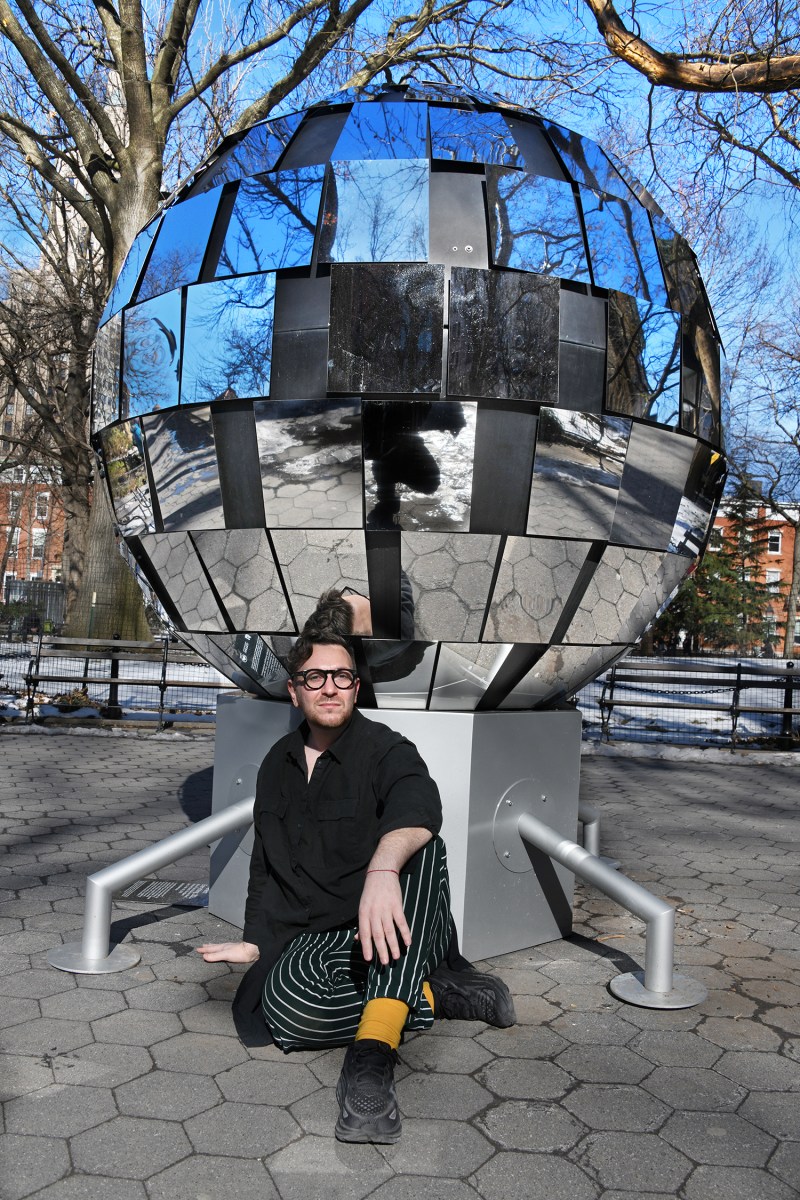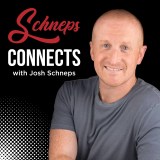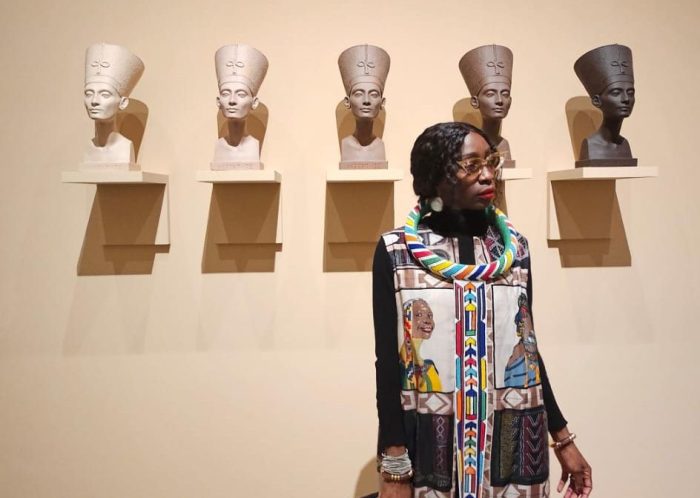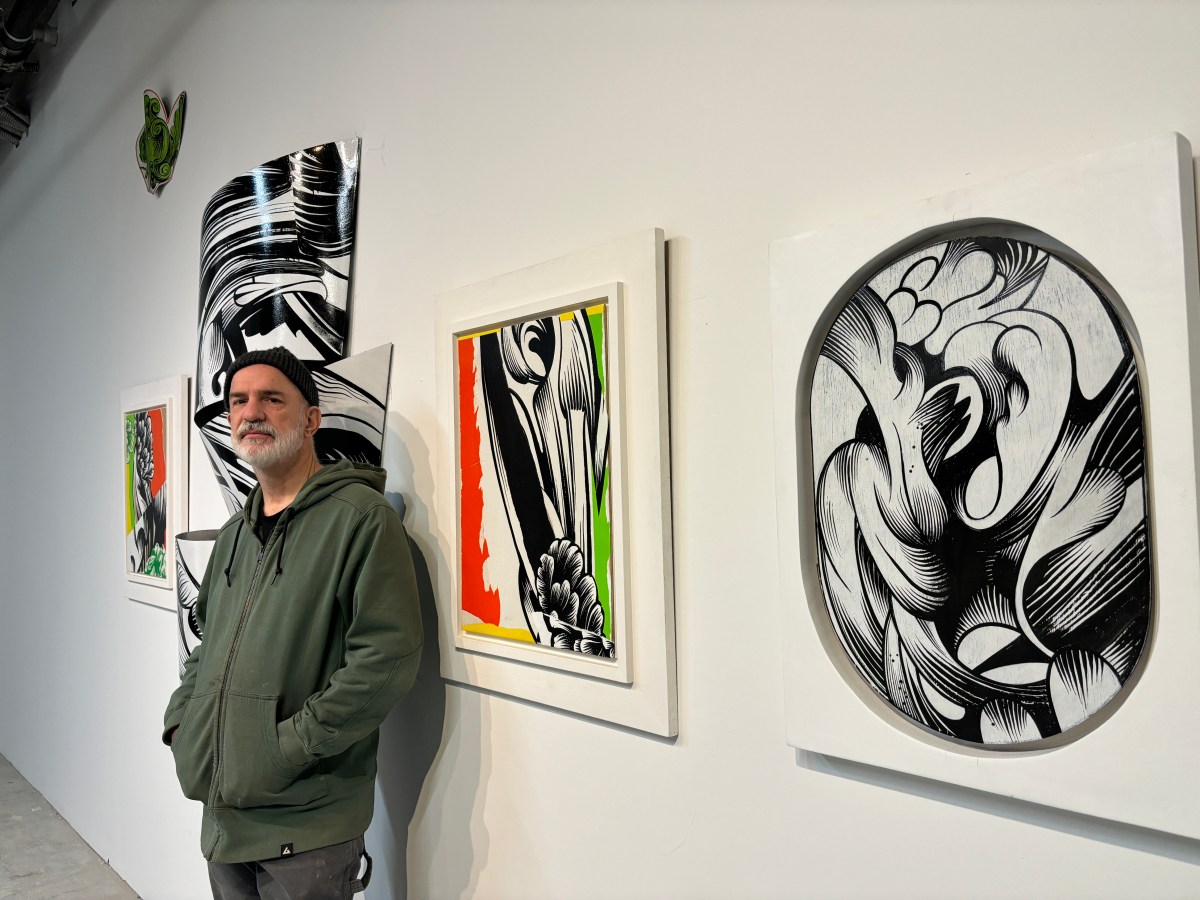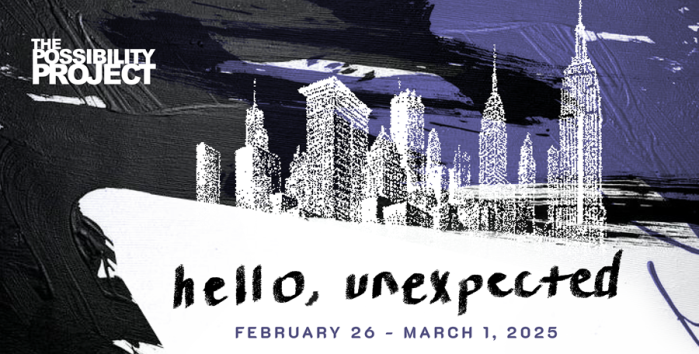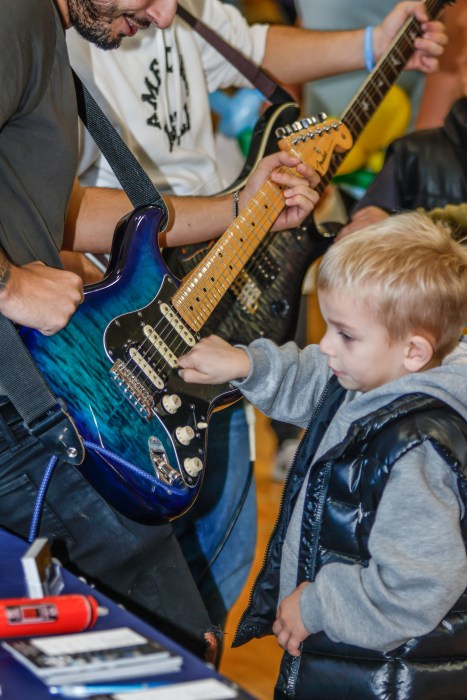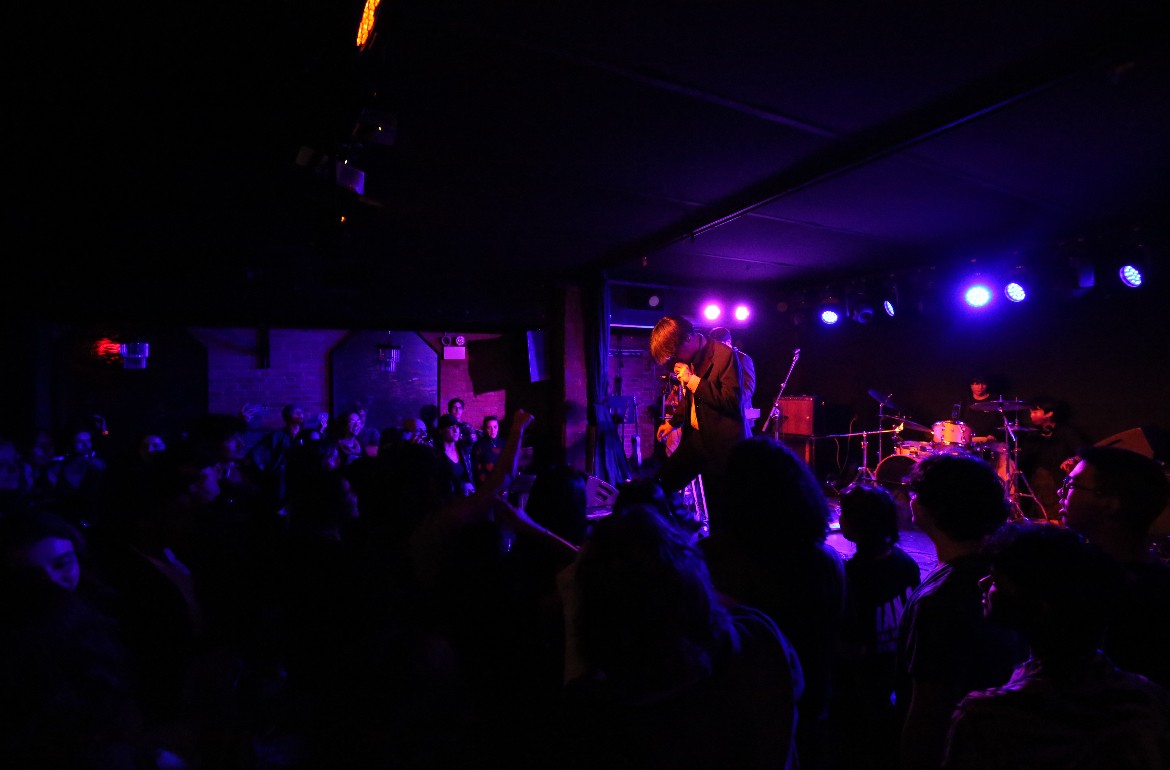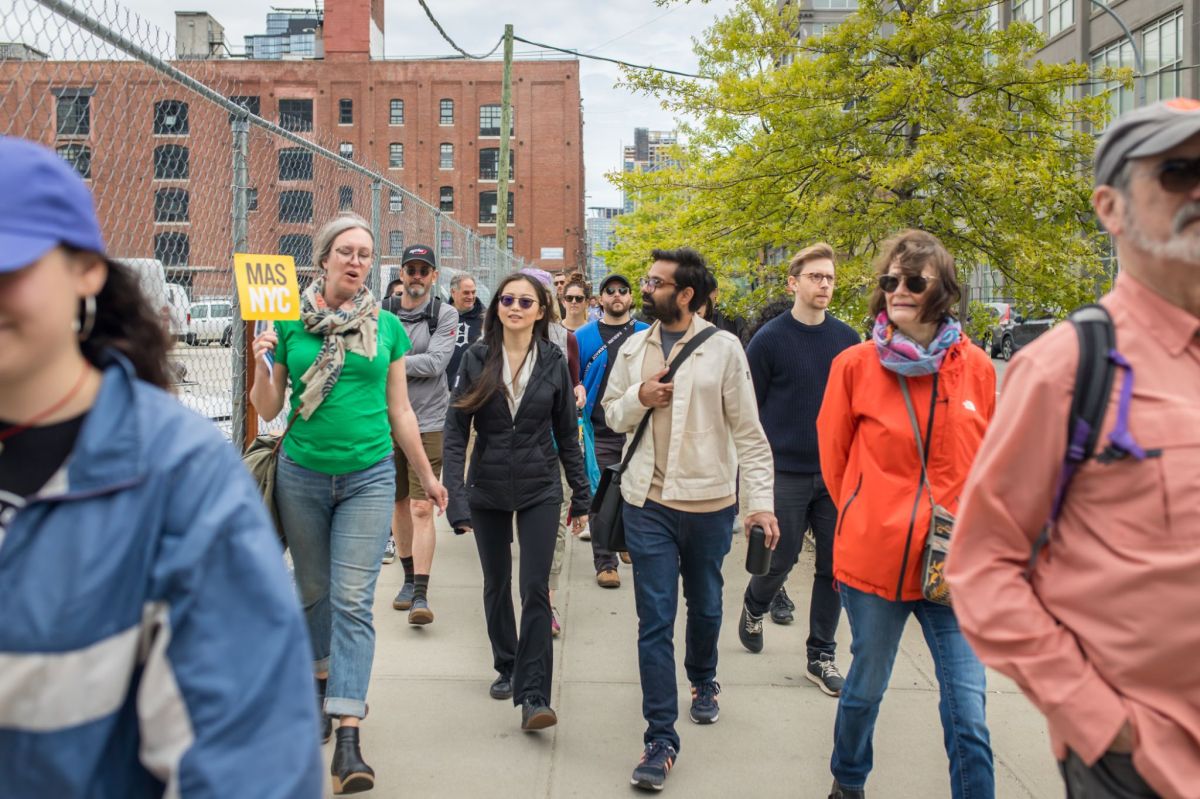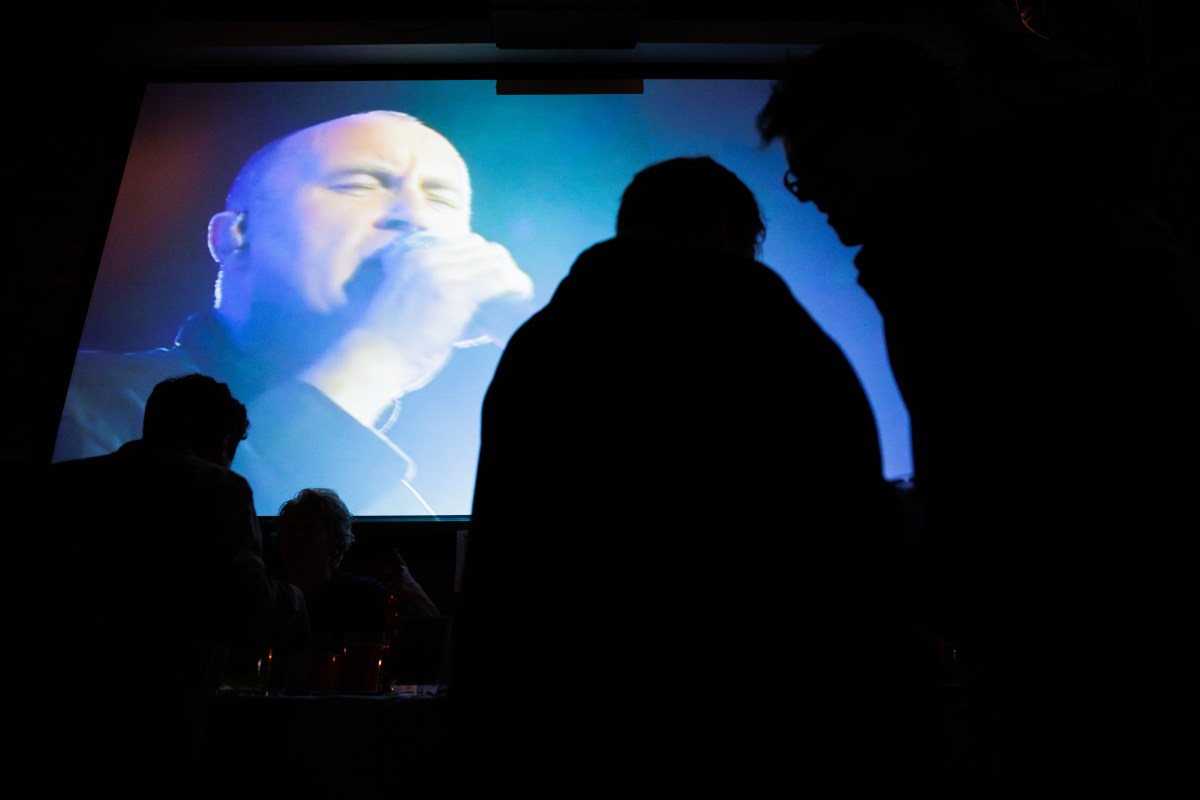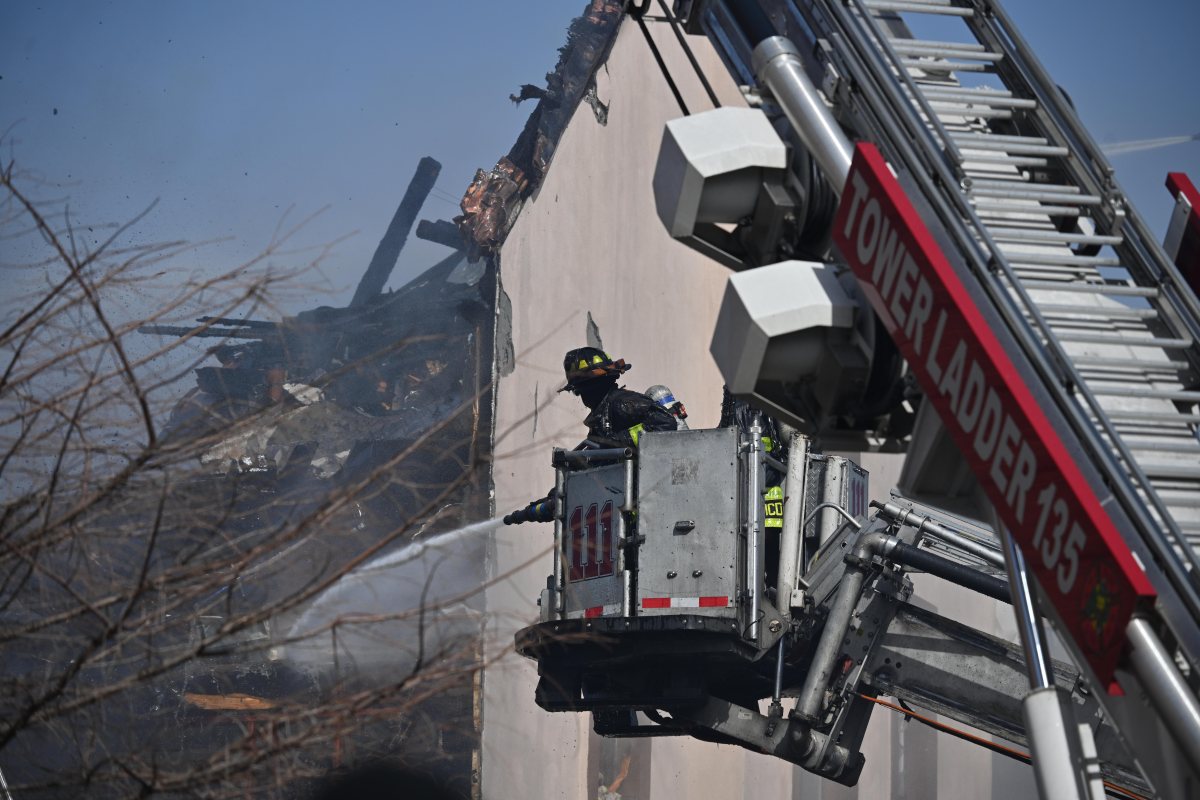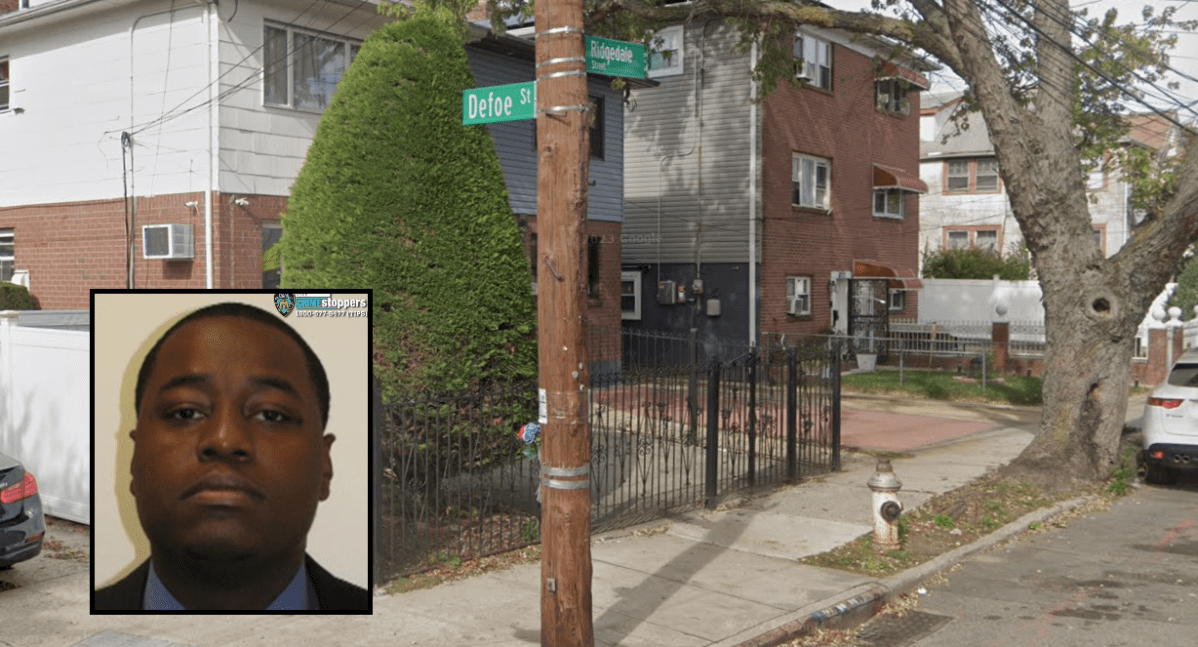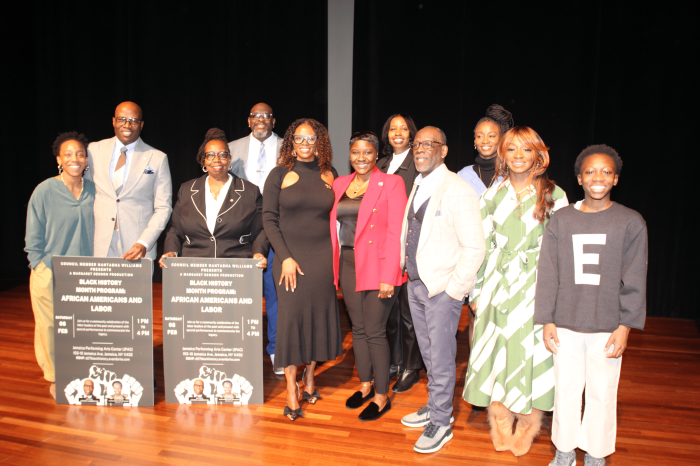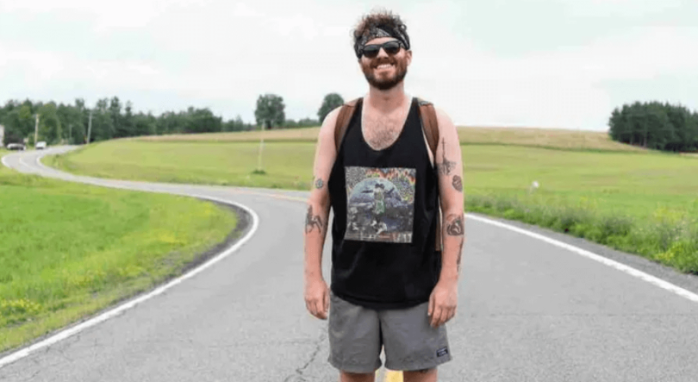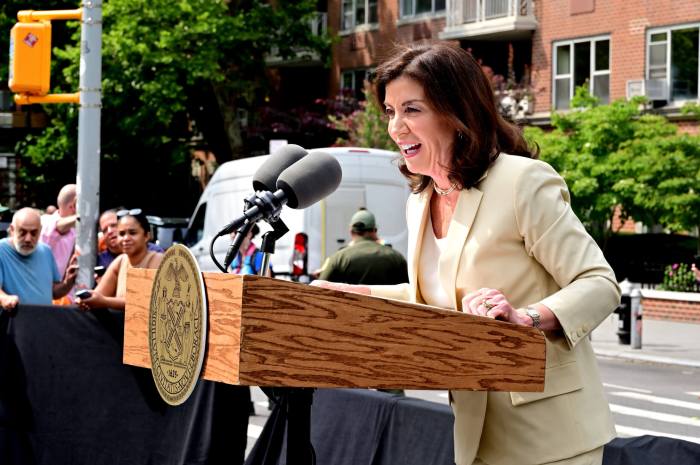Multidisciplinary artist Ryan Van Der Hout knows that if you put a bright, shiny object in the middle of a pathway in a public park, people will notice.
He also knows — or at least hopes — that passersby will be intrigued enough by his sculpture, a 1,500-pound conflation of a disco ball and a satellite titled “To Reflect Everything, 2023,” to do a little of their own, um, reflecting.
Fabricated by Van Der Hout with the help of his fellow students while studying for his Master’s degree at Parsons, the 7’-x-7’-x-10’ piece was created with mirror-finished stainless steel, painted steel, and fiberglass. Originally commissioned by the city of Toronto, the artwork was first shown there at the Toronto Sculpture Garden.
The Washington Square Park Conservancy (WSPC) was instrumental in bringing it to the park as part of the city’s “Art in the Parks” program. The WSPC website notes that it is “an evocative piece that captures the spirit of reflection, transformation, and hope.”
“Washington Square Park has been the most amazing opportunity to see people interact with the work,” the artist says. “To see people experience a lot of joy through the work, that’s been really nice. Especially living in dark times.”
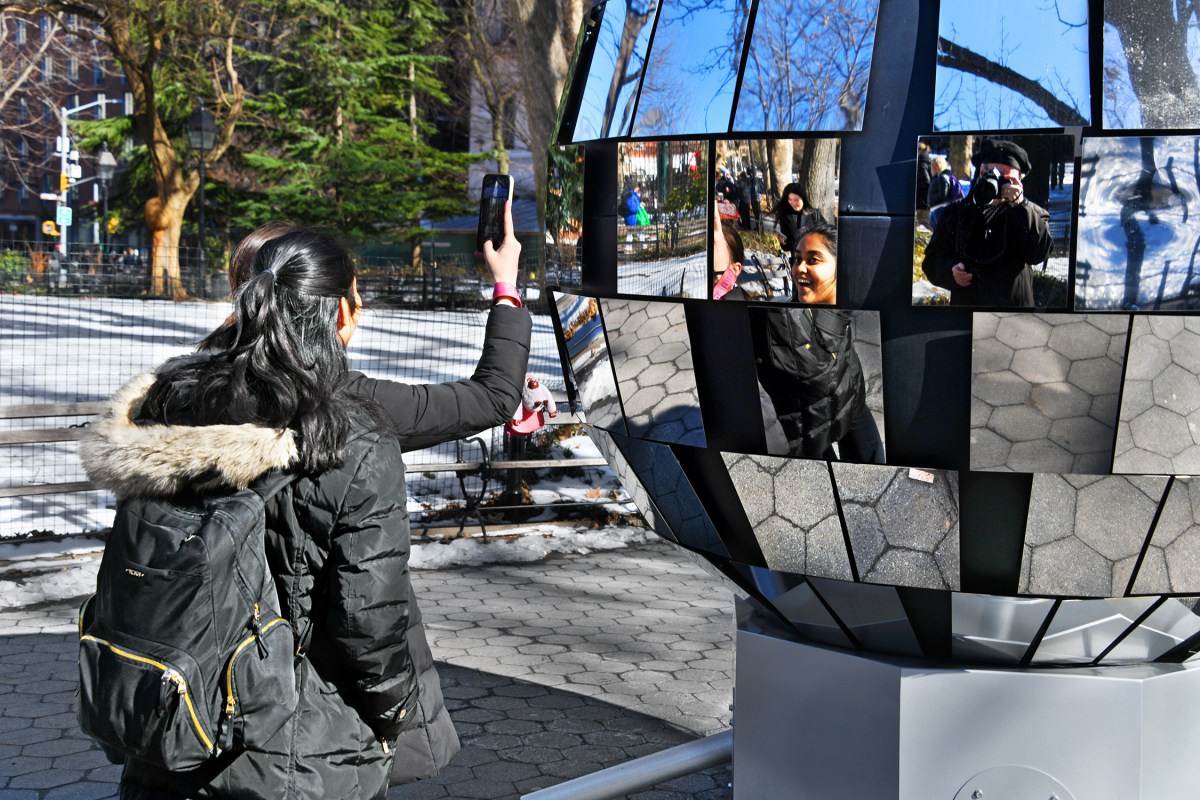

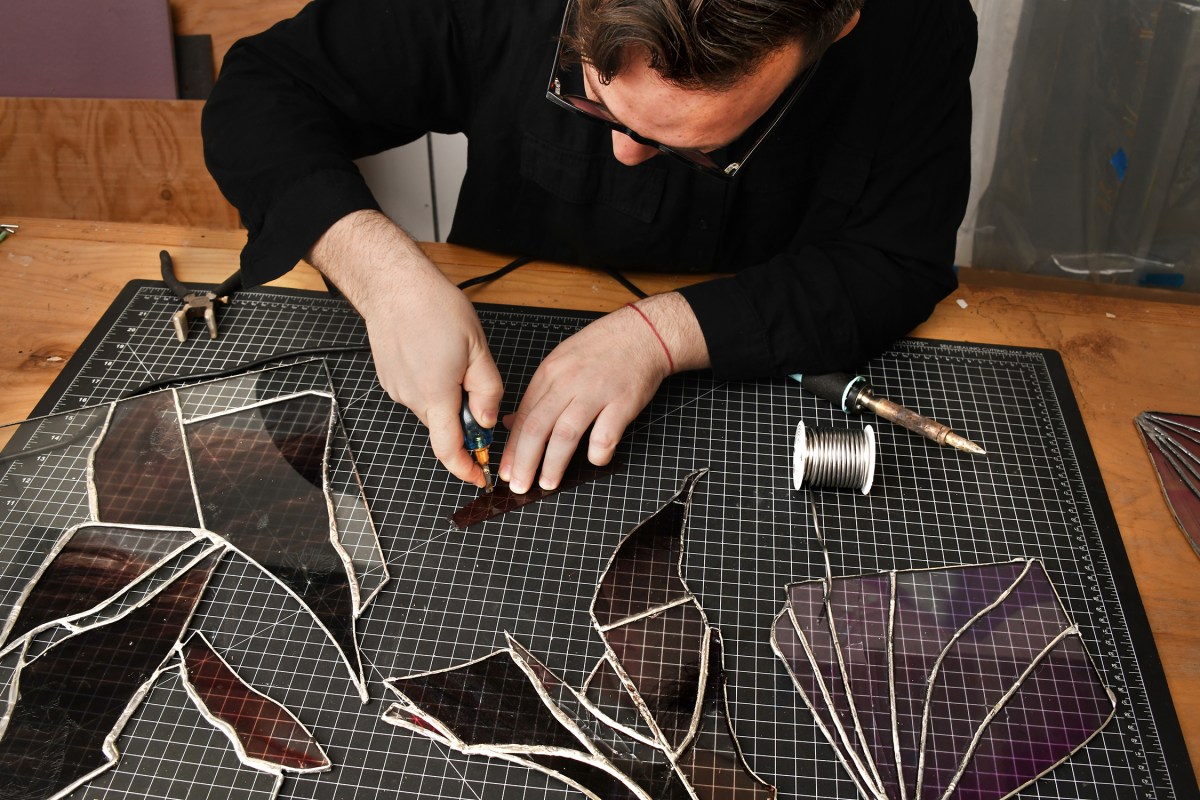
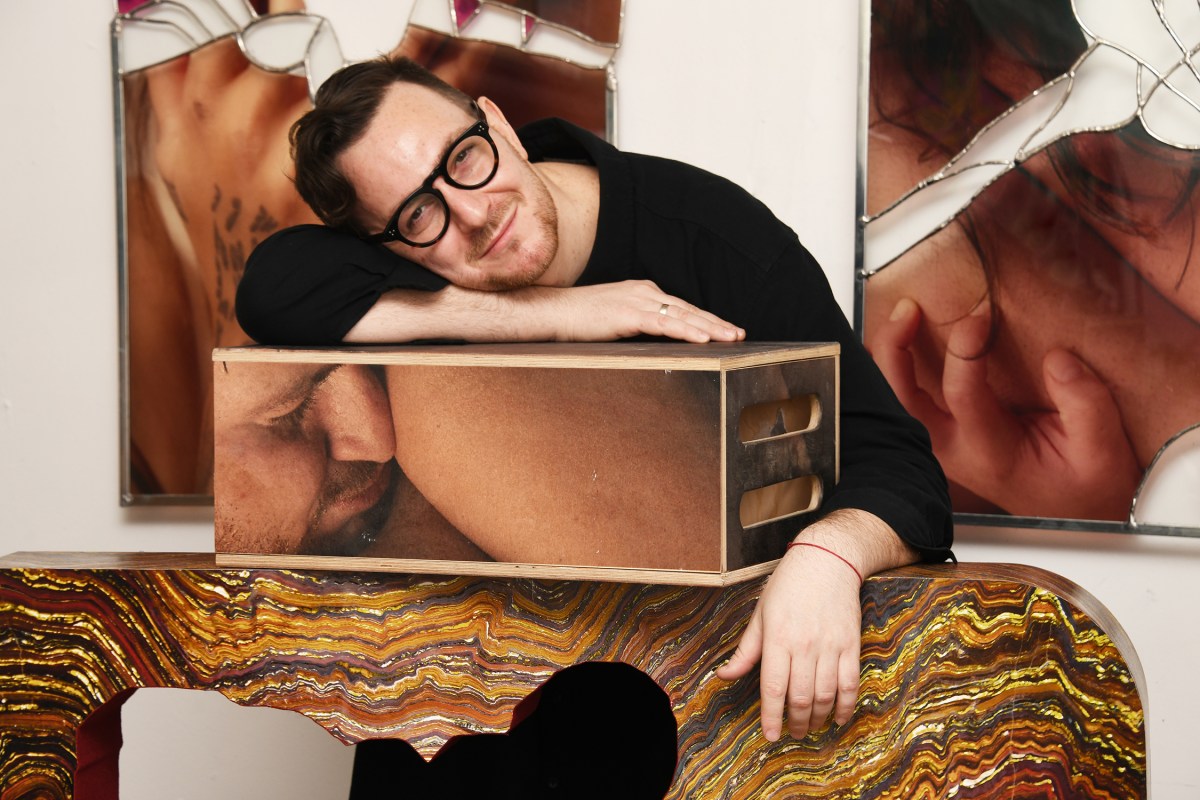
Van Der Hout notes that “one of the surprises that is really nice is how much you actually disappear into it. Although you’re staring into a field of mirrors, your image gets lost in the cracks, and you’re only seeing everything that’s around you.”
Beyond the surface pleasures of the work, there’s some deep thought that has gone into it.
A commercial photographer who splits his time between NYC and Toronto, Van Der Hout says that “90% of my time is spent making art.” Originally fascinated with large-scale photograms, he has progressed into collage and sculpture, as well as using photography to create a wide variety of works.
At one point, climate change was a theme that he was exploring, but he says, “During COVID, my focus really changed. I began looking more internally. I shifted into doing self-portraiture. I was discovering more of myself as a queer person.”
“I came out relatively late in life,” he continues. “The idea of transformation is a part of my practice. There’s a book called ‘Cruising Utopia’ that talks about queerness as something that is not in the here and now but always in the becoming. He (author Jose Esteban Munoz) talks about the disco ball as a shining beacon of Utopia.”
The work is also informed by the satellite Ajisai, launched in 1986 and still in orbit today: “I like the idea of taking something that usually hovers above, like the satellite and the disco ball, down to the ground.”
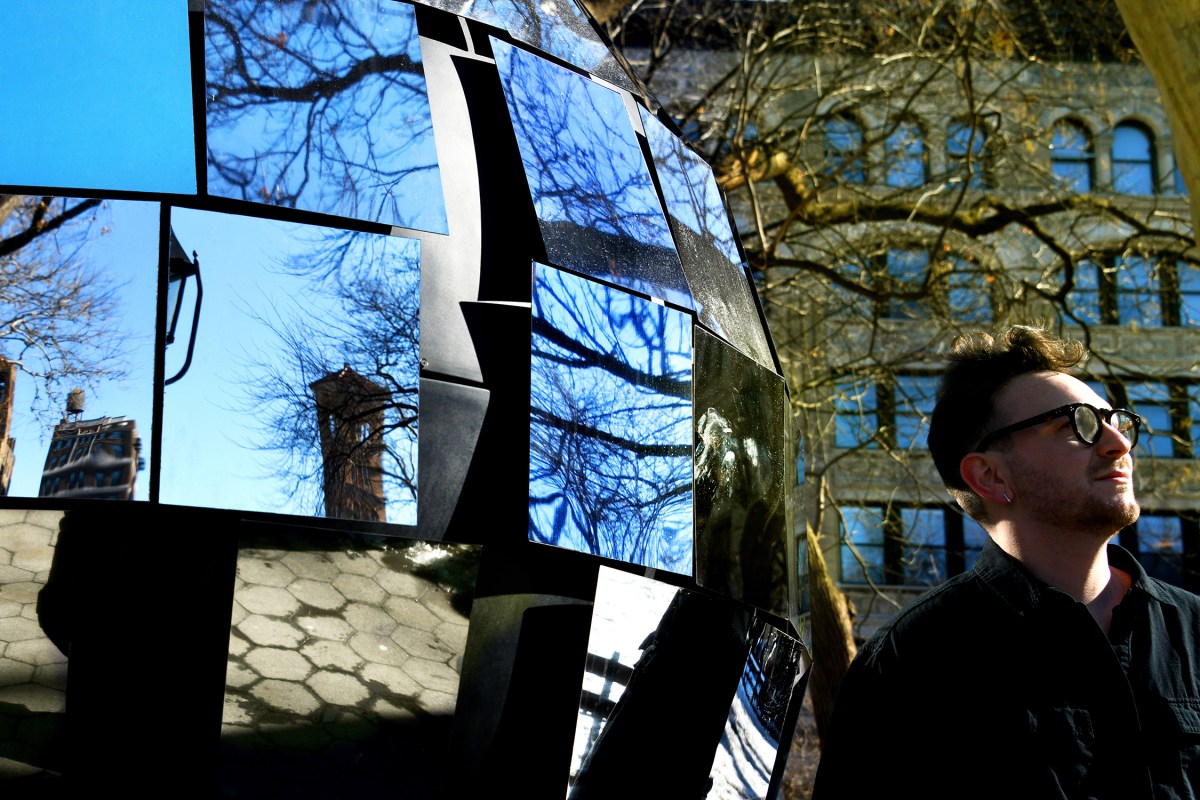
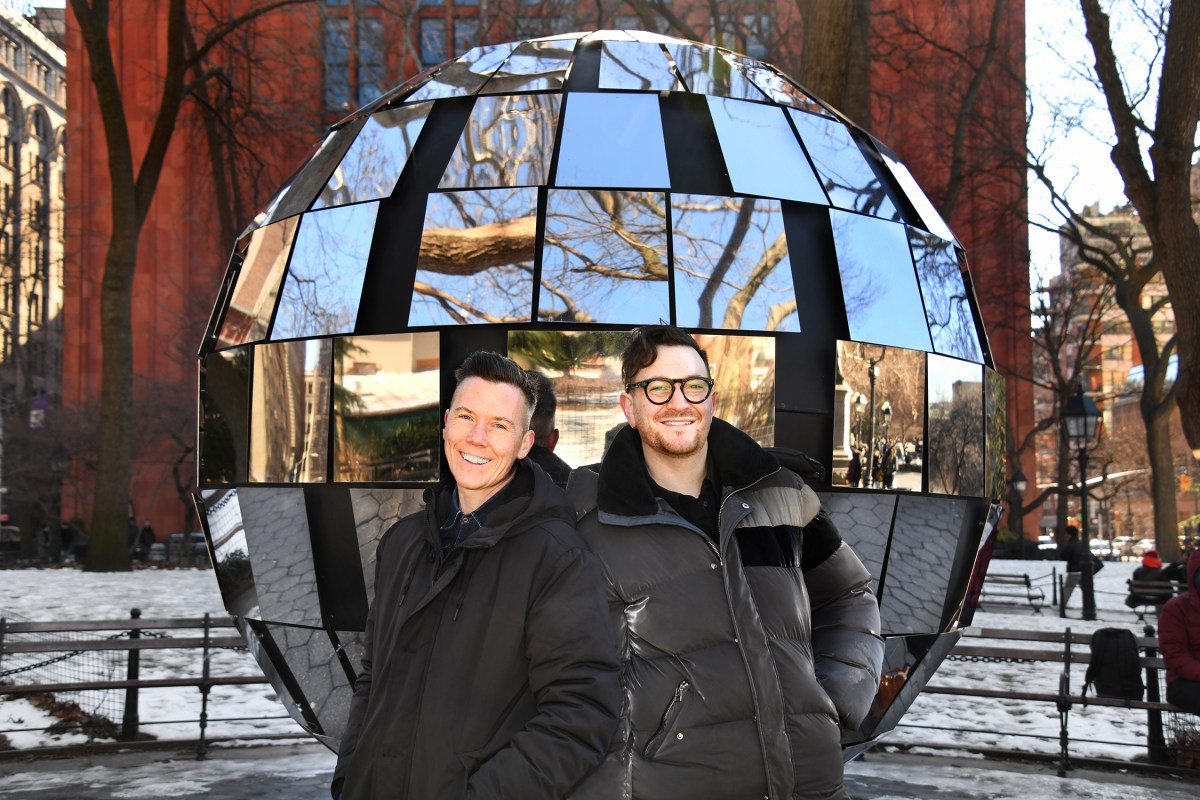
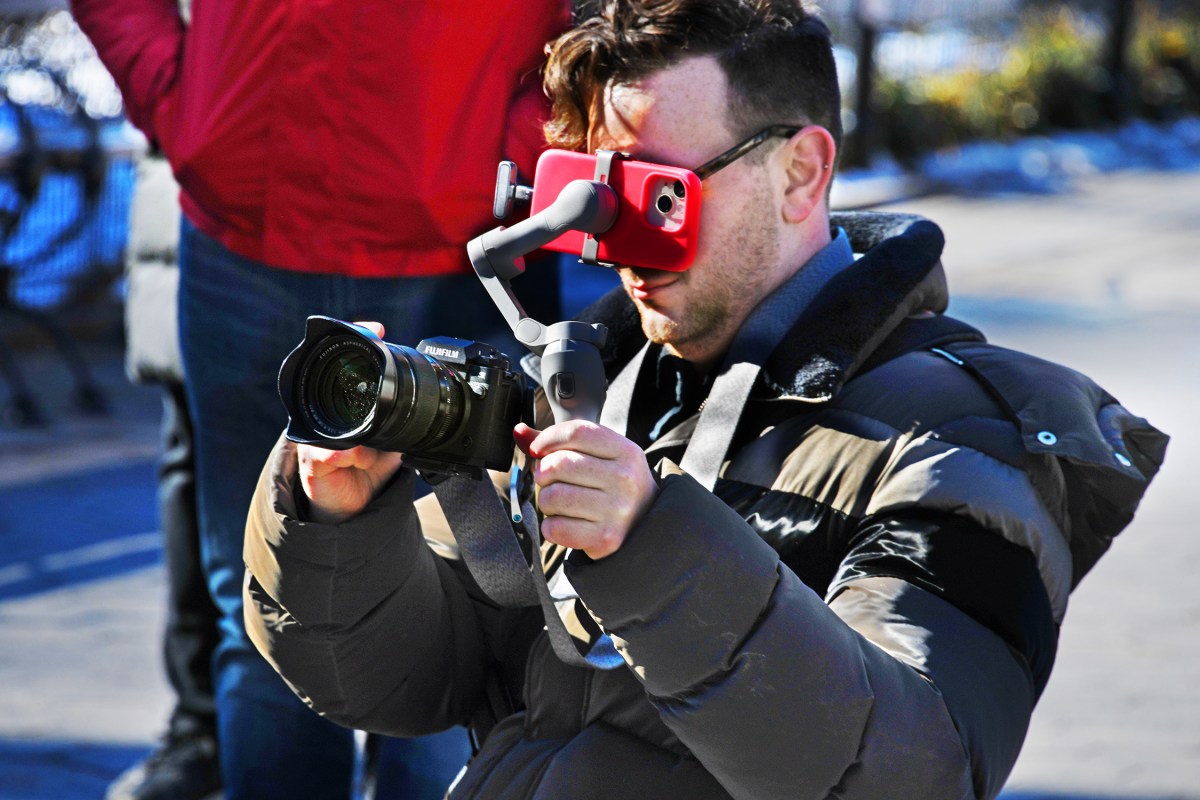

To celebrate the Washington Square Park installation, Van Der Hout engaged the services of two performance artists, artist/activist/ordained minister Gino Romero (on Jan. 6) and scholar/artist/activist Dr. Ace Lehner (on Feb. 14). Romero’s performance responded to a chapter in ‘Cruising Utopia” that dealt with the myth of Narcissus as “a queer expression of self-love” while Lehner’s piece examined many forms of love.
“A Queer Anti-Valentine’s Day Healing” began with Lehner moving around the orb chanting “Love and Justice!” while holding a snowball that held a stick of incense. Lehner explained their work, “We are living in a particularly trying time for LGBTQ+ people at the moment, and there is a lot of hatred being directed at queer and especially trans people. Currently, a lot of anxiety is felt within the LGBTQ community, and the need for love, healing, and transformative justice in queer and trans spaces is timeless and urgent. My piece was designed with all of this in mind.”
They added that, “I was also intentionally creating a piece that would offer love and healing to the participants/audience as that is something I feel we all can use more of at the moment — more commitment to love oneself and one’s communities tenderly and fiercely as a means of transforming the world. Part of the performance made space for participants to commit to loving themselves and their community more tenderly and fiercely, and I hope that people take this with them outward into the world.”
“I thought Ace’s sermon was beautiful and moving,” Van Der Hout remarked. “I love bringing in other artists to ‘play’ with and not knowing exactly what will happen. I think art is about love, and a sermon on love is exactly what we need in these troubled times. I might need that sermon daily.”
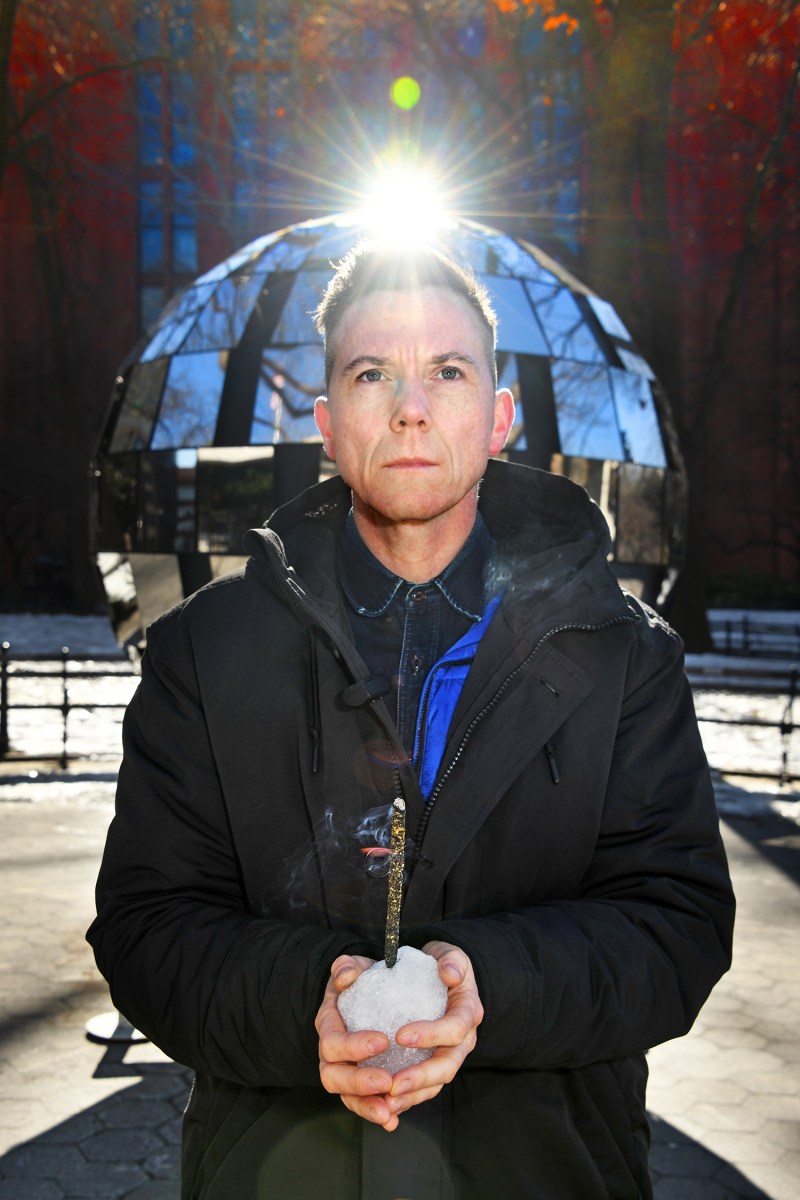
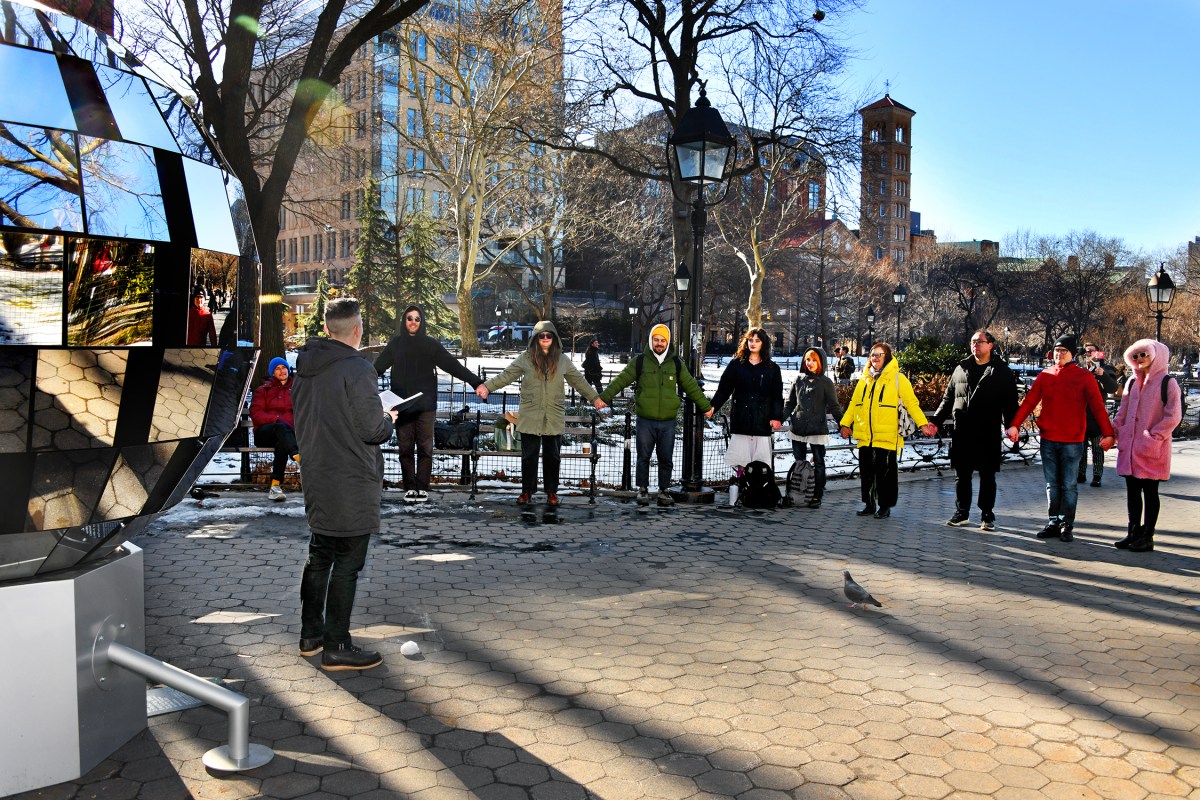

Installing the work was a community experience itself, as Van Der Hout enlisted seven Parsons students and alumni to help erect it.
“We got the coldest day of the year to install, and it takes about 10 hours, so it was challenging,” the artist recalled. “But there’s a lot of joy in getting to put together art with a big group of friends in Washington Square Park; it’s quite surreal.”
Van Der Hout further mused on the concept of the disco ball, which he describes as an object that “takes the whole world in and transforms space but shows nothing.”
“It becomes incredibly abstract,” he says. “I’d been doing these all self-portraits that were torn and fragmented, and there’s a kind of tension between how much you show and how much you reveal. The disco ball became very exciting to me as an optical device in the way that it brings salvation to the dance floor — you are in a dark, sticky room, and with one light and a disco ball, you transform it into a magical space. Bringing that idea of salvation into a public space was really exciting.”
“To Reflect Everything, 2023” will be on view on the eastern side of Washington Square Park until March 30. On March 22 at 1 p.m., the artist will give a talk onsite.
Ryan Van Der Hout’s website, ryanvanderhout.com, shows the breadth of his work, and you can follow him on Instagram at @r_vanderhout.
